Best Products Used Together With Dermarolling Therapy to Treat Atophic Acne Scars: What Dermatologist Recommends?
Are you more daring when it comes to choosing your skin care options? Are you open to new and current treatment for acne and scar removal? Have you learned about dermarolling treatment and how it can effectively help to remove your acne problems?
In fact, there are many new and emerging treatments for acne scarring. These new techniques are more effective and minimally invasive as compared with the traditional skin care techniques for acne management. In here, you will learn why dermarolling is a popular choice for many and what are the popular and most recommended topical creams that you can use together with microneedling?
The Distressing Effect of Scarring
Scarring is a distressing particularly if you have the scars and hyperpigmentation on your face. There are many reasons why scars appear on the face. The most common of which is caused by acne. [1] Scarring is a frequent occurrence in people with acne. [2] As a matter of fact, 40% of patients with acne have likelihood of having acne scarring.2
Treating post-acne scarring is very challenging. Good thing, there are many treatment options to choose from to manage these scars. One of the effective and most affordable solutions is dermarolling therapy. Unlike other skin treatment options where there is a considerable side-effects, dermaroller has few side effects that are well-tolerated by most patients.
More so, in dermarolling therapy the patients can get back to work a day after the treatment. Unlike the other treatment options where it will take few days to week before they can get back to their activities.
Gladly, newer treatments like dermarolling allow patients to return to their regular activities in a shorter time.
How Microneedling or Dermarolling Can Help Remove Acne and Scars?
Dermarolling therapy has a number of names; it is called Microneedling therapy with dermarollers, Percutaneous Collagen Induction and or Collagen Induction Therapy. [3] It is well-studied and documented treatment option together with other resurfacing skin procedures to treat atophic acne scars. Resurfacing procedures includes:
- Dermabrasion
- Chemical Peels
- Laser Resurfacing
The downside of these traditional skin resurfacing procedures is that it requires a great deal of physician experience and skills unlike microneedling where it is very easy and simple to use. It doesn’t require much training and can be performed in an out-patient basis.
Aside from acne, microneedling is also used for wide array of therapeutic skin care conditions and for skin rejuvenation.
Microneedling with or without the application of various topical application can help smoothen skin contour and reduce pigmentation. [4]
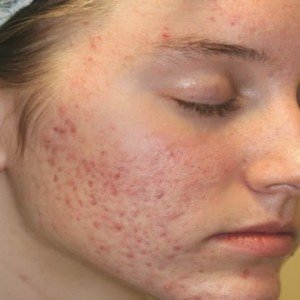
Products Commonly Used together with Dermarolling Treatment for Acne Scarring
There is no standard treatment option in treating acne scars. [5] But the demand for highly effective and less invasive techniques to treat scars like dermarolling therapy is growing. The medical management for treating atrophic scars can be done by using topical retinoids.
In clinics, the most commonly used topical drugs are the treinoin cream. Newer studies also recommend the use of Vitamin C together with microneedling to help make your skin look firm and smooth.
Topical Tretinoin Cream
Topical Tretinoin cream is applied on the affected areas of the face before and during the dermarolling therapy to effectively remove acne scars.4 After the dermarolling therapy, patients may be advice to have cleansing and peeling treatments for more effective results.
Vitamin C
Vitamin C serum is combined with microneedling to treat post-inflammatory hyperpigmentation which is secondary to acne. [6] When combined with Vitamin C, the skin also becomes more soft and firm. Vitamin C helps stimulate collagen formation in the dermis that leads to clinical improvement of the photo-aged skin with respect to dryness, smoothness and firmness.6
Asked for Dermatologist Advice
Depending on your skin condition and the severity of your acne and post-acne skin problems, your dermatologist may advice other topical creams or serum. Before putting anything on your face, make sure you seek consultation first with your dermatologist, so you would know the right product that works for your skin type.
Severe forms of acne scarring and post-inflammatory hyperpigmentation may require other forms of treatments depending on your dermatologist assessment. To prevent any adverse effects, seek consult first. More so, even if you used the right product, improper application of the topical cream or wrong use of the device may cause more harm than good to your skin.
Acne is a common skin problem, and there are lots of new and effective alternative options to treat this condition. So worry no more, with the right technique and proper application, you will see the difference in no time.
Read more of acne scars treatment with Derma Rolling
Bibliography
[1] Imran Majid. (2009). Microneedling Therapy in Atrophic Facial Scars: An Objective Assessment. J Cutan Aesthet Surg. , 26–30.
[2] Alison Layton, Brigitte Dréno, Andrew Y. Finlay, Diane Thiboutot, Sewon Kang, Vicente Torres Lozada, Valerie Bourdès, Vincenzo Bettoli, Laurent Petit, and Jerry Tan. (2016). New Patient-Oriented Tools for Assessing Atrophic Acne Scarring. Dermatol Ther , 219–233.
[3]Imran Majid, Gousia Sheikh. (2014). Microneedling and its applications in dermatology. International Journal of Aesthetic and Anti-aging Medicine .
[4] W. Philip Werschler, MD, * Richard S. Herdener, MD, Victor E. Ross, MD, and Edward Zimmerman, MD,. (2015). Treating Acne Scars: What’s New? J Clin Aesthet Dermatol. , S2–S8.
[5] Shilpa Garg and Sukriti Baveja. (2014). Combination Therapy in the Management of Atrophic Acne Sca. J Cutan Aesthet Surg. , 18–23.
[6] Chawla, S. (2014). Split Face Comparative Study of Microneedling with PRP Versus Microneedling with Vitamin C in Treating Atrophic Post Acne Scars. J Cutan Aesthet Surg. , 209–212.


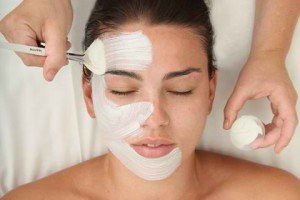

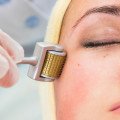
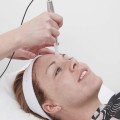
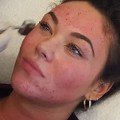


Please add your thoughts
Leave a Reply
Want to join the discussion?Feel free to contribute!